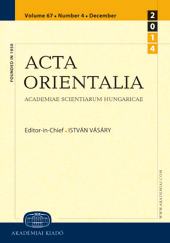Bektaşi monasteries in Ottoman Hungary (16th–17th centuries)
Bektaşi monasteries in Ottoman Hungary (16th–17th centuries)
Author(s): Balázs SudárSubject(s): Theology and Religion, 16th Century, 17th Century, The Ottoman Empire
Published by: Akadémiai Kiadó
Keywords: Ottoman Hungary; Bektaşi order; derviş; monastery; baba;
Summary/Abstract: In the 16th–17th centuries the Ottoman conquerors of the occupied territories of Hungary gradually established their own intitutions. Together with the military, dervishes also appeared and generally settled outside the defended city walls. Owing to the sparsity of source material, the lives and activities of these dervishes and their monasteries are less known. The present study attempts to collect and present all the data concerning the Bektaşi convents in Ottoman Hungary. Five monasteries are known to have existed that undoubtedly belonged to the Bektaşi order: two in Buda, one in Eger, another one in Székesfehérvár and one in Lippa. It is most likely that the convent of Yağmur Baba in Hatvan, that of Muhtar Baba in Buda, and perhaps that in Szolnok also had Bektaşi affiliations. This relatively small number may probably be augmented in the future, since many more Babas had monasteries and shrines in Ottoman Hungary, whose biographies and affiliations still await further research. Obviously, the political elite in Ottoman Hungary considered it important to support the Bektaşi dervishes; they fostered the building of convents and provided them with endowments. Thus, in addition to the pronounced presence of the Bektaşis in literary monuments, and the reputation of Gül Baba preserved throughout the centuries, the presence of Bektaşi convents in Hungary also testifies to the significant role played by this dervish order in the cultural life of Ottoman Hungary.
Journal: Acta Orientalia Academiae Scientiarum Hungaricae
- Issue Year: 61/2008
- Issue No: 1-2
- Page Range: 227-248
- Page Count: 22
- Language: English
- Content File-PDF

